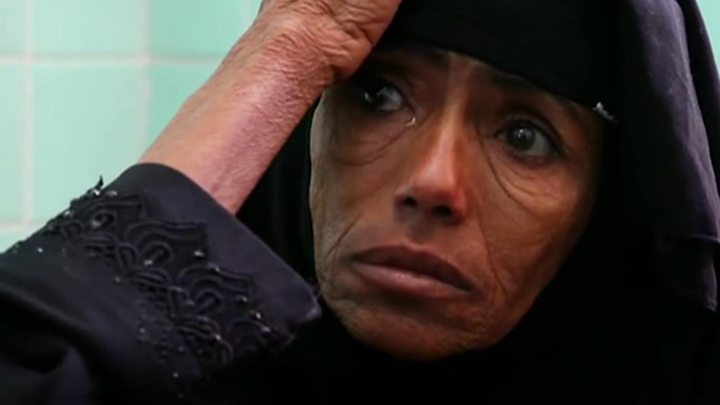By Akanimo Sampson
The image of a Yemeni woman who resisted bombs in her bleeding country is currently on display at the United Nations’ European headquarters in Geneva Switzerland. Her resilience was captured by a documentary photographer, Thana Faroq.
Bombs were dropping in Yemen, but that did not stop the dare-devil Yemeni woman from completing the task at hand: baking a massive cake.
Being displaced by the ongoing conflict in Yemen, which began in 2015, did not mean a life of cowing in a corner for this woman entrepreneur.
Life does not stop, neither does people’s craving for cake.
“I never stop craving something sweet,” she told Ms. Faroq and this made her realise that her neighbours likely felt the same way, igniting a small business.
Faroq, also from Yemen, is exhibiting her image alongside 30 other photographs featured in a joint initiative by the United Nations Conference on Trade and Development (UNCTAD), the International Organisation for Migration (IOM) and the United Nations Refugee Agency (UNHCR) to change the narrative around refugees and migrants.
While migrants and refugees need a new place to call home, their journeys do not stop there. Most want to live productive lives, earn a living, support their families and make a meaningful contribution, both in new communities and their home countries.
Faroq said witnessing the resilience of women in Yemen helped her deal with the trauma of war. “War sucks up your energy. But observing women in their households helped me. In the context of Yemen, women are superheroes. They are Wonder Woman”, she said.
“And it is not only about helping their families, but it is also about going beyond the box they are put in.”
Faces of resilience
The 30 images featured in the exhibition show how these entrepreneurs are finding a way to move beyond humanitarian aid to ply their trade. It also shows the diversity of the refugee and migrant stories.
UNCTAD Deputy Secretary-General, Isabelle Durant, said “we decided to host an exhibition because pictures make you see a human being, you have to stop and look them in the eye. We invite people to come to the exhibit and see a different side of the people behind the label of refugee or migrant.”
The images are honest, raw and inspiring. They also paint a powerful narrative of the “humanitarian–development nexus”.
For UNCTAD’s Director of Investment and Enterprise, James Zhan, “Migrant and refugee entrepreneurship is a powerful response to marginalisation, isolation, poverty, and stigmatization.
“Yet, migrants and refugees face obvious barriers to engaging in economic activity. These include their legal status, regulations preventing them from working and accessing basic services, lack of access to start-up financing and formal bank accounts, language, and cultural barriers.”
The idea to work on changing the narrative was borne of the ongoing partnership between the three UN organisations and their work on the Policy Guide on Entrepreneurship for Migrants and Refugees – a roadmap for integrating migrants and refugees into local communities.
Adding, Ms. Durant said, “the benefits of migration to economic development are seldom visible. This exhibit aims to make that which is not easily seen, seen.”
Also on display is a new collective sculpture that renowned artist Romain Langlois of the 111-Days Association Art for Refugees created in collaboration with twenty migrants and refugees in France.
|

